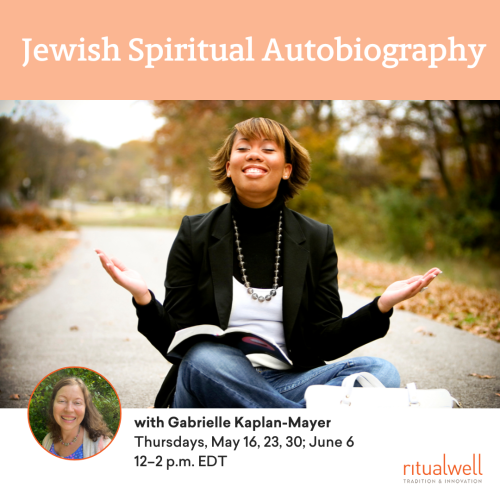From NeoHasid.org
First published in SiddurLit. Order of prayers. The prayer book. Chaverim Kol Yisrael
בָּרוּךְ אַתָּה אֲדֹנָי אֱלֹהֵינוּ וֵאלֹהֵי אֲבוֹתֵינוּ, אֱלֹהֵי אַבְרָהָם, אֱלֹהֵי יִצְחָק, וֶאֱלֹהֵי יַעֲקֹב, הָאֵל הַגָּדוֹל הַגִּבּוֹר וְהַנּוֹרָא, אֵל עֶלְיוֹן, גּוֹמֵל חֲסָדִים טוֹבִים, וְקֹנֱה הַכֹּל, וְזוֹכֵר חַסְדֵי אָבוֹת (וְחֵיל אִמָּהוֹת) וּמֵבִיא גּוֹאֵל לִבְנֵי בְנֵיהֶם, לְמַעַן שְׁמוֹ בְּאַהֲבָה
.כִּי אַתָּה אֱלֹהֵי שָׂרָה, אֱלֹהֵי רִבְקָה, אֱלֹהֵי רָחֵל, וֵאלֹהֵי לֵאָה וּפוֹקֵד אֶת בְנֵי בְנֵיהֶן בִּשְׂכַר פְעֻלָּתָן בְּאַהֲבָה. מֶלֶךְ עוֹזֵר וּמוֹשִׁיעַ וּמָגֵן
בָּרוּךְ אַתָּה אֲדֹנָי, מַגֵּן אַבְרָהָם (וּפוֹקֵד שָׂרָה)
Or
בָּרוּךְ אַתָּה אֲדֹנָי, (פּוֹקֵד שָׂרָה) וּמָגֵן אַבְרָהָם
Barukh atah Adonay eloheynu v’elohey avoteynu, elohey AvrahamAbraham is the first patriarch and the father of the Jewish people. He is the husband of Sarah and the father of Isaac and Ishmael. God's covenant - that we will be a great people and inherit the land of Israel - begins with Abraham and is marked by his circumcision, the first in Jewish history. His Hebrew name is Avraham., elohey Yitzkhak, v’elohey Ya’akov, ha’el hagdol hagibor v’hanora, el elyon, gomelBirkat Hagomel is the blessing said by someone who survives a potentially life-threatening situation. Traditionally said after childbirth, serious illness, travel, or other types of danger. khasadim tovim, v’koney hakol, v’zokher khadey avot (v’kheyl imahotLit. Mothers The foremothers, or matriarchs: Sarah, Rebecca, Rachel and Leah.) u’meyvi goel livney b’neyhem, l’ma’an shmo b’ahavah.
Ki atah elohey SarahThe first matriarch, wife of Abraham, and mother of Isaac, whom she birthed at the age of 90. Sarah, in Rabbinic tradition, is considered holy, beautiful, and hospitable. Many prayers, particularly the Amidah (the central silent prayer), refer to God as Magen Avraham – protector of Abraham. Many Jews now add: pokehd or ezrat Sarah – guardian or helper of Sarah., elohey Rivkah, elohey Rakhel, v’elohey LeahThe third of the Jewish matriarchs, Lead is the eldest of Lavan's daughters and one of the wives of Jacob. She is the daughter whom Lavan tricks Jacob into marrying instead of his younger daughter Rachel, whom Jacob has requested to marry. Leah is mother to six of the the twelve tribes and to one daughter, Dinah. u’foked et v’ney v’neyhen biskhar p’ulatan b’ahavah. Melekh ozer u’moshia u’magen.
Barukh atah Adonay, magen Avraham (u’foked Sarah)
Or
Baruk atah Adonay (u’foked Sarah) u’magen Avraham.
Blessed be You…who remembers…the valor of the mothers…for you are the God of Sarah, God of RebeccaThe second Jewish matriarch, Isaac's wife, and mother to Jacob and Esau. Rebecca is an active parent, talking to God when she is pregnant and learning the fate of her children, then ultimately manipulating Isaac and the children to ensure Jacob's ascendancy. Her Hebrew name is Rivka., God of RachelLavan's younger daughter and Jacob's beloved wife second wife (after he is initially tricked into marrying her older sister, Leah). Rachel grieves throughout her life that she is barren while Leah is so fertile. Ultimately, Rachel gives birth to Joseph and dies in childbirth with Benjamin. Rachel is remembered as compassionate (she is said to still weep for her children), and infertile women often invoke Rachel as a kind of intercessor and visit her tomb on the road to Bethlehem. and God of Leah, and you visit their children’s children with the reward of their work in love…Blessed be You…who visits Sarah…
BRIGHT BLUE in the blessing indicates added language. Parentheses indicate parts that someone following a stricter halakhic interpretation might leave out. The formula ki atah follows the pattern of Sefardi additions to other blessings of the AmidahLit. Standing One of the central prayers of the Jewish prayer service, recited silently while standing.. The placement of this phrase occurs where it is customary and halakhically normative to add to both piyutim and High Holiday changes to the Avot prayer. One could add cheil imahot instead after Elohei Leah, viz. v’zokher cheil imahot ufoked et b’nei v’neihem. This would interrupt the original structure of the blessing less (and so might be preferred), but it also seems unwieldy. The first of the alternate closing lines preserves the order of the original, while the second better preserves the sound. Both ways of adding to the chatimah have some liturgical precedent.
Comments: All the new language used in the blessing is drawn directly from the following Biblical verses. These verses include language which indicates that the relationship with the mothers was covenantal and is therefore on par with the language in the Avot prayer about the fathers. On the issue of covenant with the mothers, see also Savina Teubal’s Sarah the Priestess on why all of the Avot had to have wives related to Sarah.
Source texts: BRIGHT BLUE in the verses below indicates words quoted directly in the language added to the blessing. GREEN in the verses indicates words which show that the relationship with the mothers was covenantal.
בראשית כא א
וַיהוָה פַּקֵּד אֶת שָׂרָה כַּאֲשֶׁר אָמַר וַיַּעַשׂ יְהוָה לְשָׂרָה כַּאֲשֶׁר דִּבֵּר: וַתַּהַר וַתֵּלֶד שָׂרָה וְאַבְרָהָם בֵּן לִזְקֻנָיו
רות ד יא
וַיֹּאמְרוּ כָּל הָעָם… יִתֵּן יְהוָה אֶת הָאִשָּׁה הַבָּאָה אֶל בֵּיתֶךָ כְּרָחֵל וּכְלֵאָה אֲשֶׁר בְּנוֹ בָּנוּ שְׁתֵיהֶם אֶת בֵּית יִשְׂרָאֵל וַעֲשֵׂה חַיִל…
ישעיה נא ב
הַבִּיטוּ אֶל אַבְרָהָם אֲבִיכֶם וְאֶל שָׂרָה תְחְוֹלֶלְכֶם כִּי אֶחָד קְרָאתִיו וַאֲבָרְכֵהוּ וְאַרְבַּהוּ
ירמיה לא יד
כֹּה אָמַר יְהוָה קוֹל בְּרָמָה נִשְׁמָע… רָחֵל מְבַכָּה עַל בָּנֶיהָ… כֹּה אָמַר יְהוָה מִנְעִי קוֹלֵךְ מִבֶּכִי וְעַינָיִךְ מִדִּמְעָה כִּי יֵשׁ שָׂכָר לִפְעֻלָתֵךְ נְאֻם יְהוָה… וְיֵשׁ תִּקְוָה לְאַחֲרִיתֵךְ נְאֻם יְהוָה וְשָׁבוּ בָנִים לִגְבוּלָם
רות ג יב
יִשָּׁלֵם יְהוָה פָּעָלֵךְ וּתְהִי מַשְׂכֻּרְתֵךְ שְׁלֵמָה מֵעִם יְהוָה אֱלֹהַי יִשְׂרָאֵל אֲשֶׁר בָּאת לַחֲסוֹת תַּחַת כְּנָפָיו
***
NOTES
- The most important feature of the way the verses are used is the coupling of poked “visits” with s’khar f’ulatan “reward for their work”. In almost all other Biblical contexts, the root P.K.D. indicates the fulfillment of a negative promise, i.e., to bring chastisement for sin (see however Ps. 65:10). While in Gen. 21:1 poked is wholly positive, to use this word standing alone in a blessing, as some do in the chatimah and the line melekh ozer umoshi’a ufoked umagen, invokes those negative connotations. Pairing poked with the positive language of covenantal promise from Jer. 31 resolves that ambiguity.
- Sakhar is a word that indicates covenantal reward in two other contexts, most importantly in Gen. 15:1 (“Do not fear AvramAbraham is the first patriarch and the father of the Jewish people. He is the husband of Sarah and the father of Isaac and Ishmael. God's covenant - that we will be a great people and inherit the land of Israel - begins with Abraham and is marked by his circumcision, the first in Jewish history. His Hebrew name is Avraham., I am your shield, your reward is very great”), which is the source of the chatimah or closing line, magen Avraham.
- The phrase cheil imahot “valor of the mothers” also evokes the poem Eishet Chayil, “the woman of valor”.
-
Though cheil in RuthAn important female biblical character with her own book. The Book of Ruth, read on Shavuot, tells the story of Ruth’s devotion to her mother-in-law, Naomi, and their return to Israel. Ruth’s story is often read as the first story of conversion. Ruth is the grandmother of King David. 3 refers to Boaz, it nevertheless evokes an
inclusive model of the covenant that compares Ruth and Boaz as a unit with JacobLit. heel Jacob is the third patriarch, son of Isaac and Rebecca, and father to the twelve tribes of Israel. More than any of the other patriarchs, Jacob wrestles with God and evolves from a deceitful, deal-making young man to a mature, faithful partner to God. His Hebrew name is Yaakov., Leah and Rachel. The placement of Rachel before Leah in Jewish liturgy is incidentally based on this verse. - The resonance between cheil “valor” and t’cholelchem “the one who bore you” in Isa. 51:2 is intended to invoke the one verse that clearly states that the imahot were equal covenantal partners with God alongside men. Any claim that the mothers were not covenantal partners (e.g. by David Golinkin in his t’shivahSeven-day mourning period following the funeral of a first-degree relative, during which time family members remain at home and receive visits of comfort. Other customs include abstinence from bathing and sex, covering mirrors, sitting lower than other visitors, and the lighting of a special memorial candle which burns for seven days. against adding the imahot) is not consistent with this verse.
- This version of adding the imahot does not deal with the question of the status of Bilhah and Zilpah, who are included as matriarchs along with the four imahot in some midrashim.
- This blessing was first published in Siddur Chaverim Kol Yisrael, without the notes.
Courtesy of Neohasid.org, copy freely. For more information, feedback, etc., go to http://neohasid.org or write to R. David Seidenberg at rebduvid86@hotmail.com.












